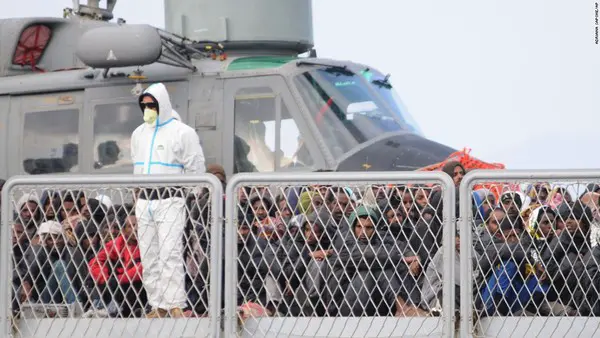by Alessandra Cardone
As the year's end approaches, the latest data on Europe's refugee crisis showed the overall inflow of people fleeing war and poverty has sensibly dropped, compared to 2015.
Yet, Italy has remained on the frontline of the emergency, with numbers soaring in latest months despite the winter and worsening conditions in the sea that separates Europe from Africa's coasts.
Some 357,800 arrivals have been so far registered through the Mediterranean routes (including Greece, Italy, and Spain), compared to over 1 million in the whole last year, according to the UN refugee agency UNHCR.
In Italy, however, some 179,081 people have arrived between Jan. 1 and Dec. 11, against a total of 153,842 in 2015.
"While (Italy's) arrival trends in 2016 remained consistent with those of 2015 up until the end of Sept., arrivals since then have generally been higher," the UNHCR said in a report earlier this week.
The UN agency added it was "monitoring potential factors contributing to the increase," including a possible drop in the prices imposed by smugglers for Mediterranean crossing.
The Italian capital provided a good example of the overall situation in the country. Being Italy's largest city, it is a major destination or transit point for migrants and refugees.
"This remains a phase of high reception," Lino Posteraro, head of social and migration-related activities with Rome Red Cross, confirmed to Xinhua.
"It sounds strange, but we are witnessing much higher figures (of arrivals) in these weeks compared to the past, despite being winter."
While the peak of arrivals in Rome was registered between July and August in previous years, this year it was in November.
Currently, the Rome Red Cross was assisting some 750 people, all of them applying for various forms of humanitarian protection, according to the official.
"We have 400 people in the first reception hub, which consists of two tent camps and one house," Posteraro said.
"We also manage three emergency reception centers with 150, 70, and 25 people respectively; one humanitarian shelter with 85 people -- all waiting to be relocated in Europe -- and a structure for non-accompanied migrant minors with 28 kids."
The Red Cross is only one of the many humanitarian groups involved in the management of the migration issue in the capital.
Despite the network of reception centers set up by Rome authorities, however, the available places seem not enough to house everyone, and several migrants have remained stranded in latest months.
"Being not the only ones involved in the emergency, we cannot precisely say what percentage of migrants remains cut off from the hospitality network," Posteraro explained.
"Yet, it is very clear that Rome has a problem of reception right now: every night, we have a number of people -- from a few dozens to a few hundreds -- who finds no place in the circuit."
The daily reports of the Italian coast guard, which coordinates all rescue missions in central Mediterranean, would provide further proof. Looking at the latest days only, it registered 791 people rescued on Dec. 4; 473 on Dec. 6; 127 on Dec. 7; 1,164 on Dec. 11; and 1,134 on Dec. 12.
Yet, these numbers alone would not explain why the Italian authorities struggle to cope with the situation. For a country with 60 million inhabitants, some 175,000 people -- most of whom were willing to proceed elsewhere in Europe -- would not represent an unbearable burden.
Two factors need to be added: firstly, the distribution of refugees and migrants across the country has been uneven so far.
Only 2,600 out of 8,000 Italian municipalities have accepted to host them, according to Director General of the Interior Ministry's immigration department Mario Morcone.
This has resulted in "a very patchy situation," Morcone declared in a hearing in late October.
The Interior Ministry has recently launched a new plan in cooperation with the association of Italian municipalities (ANCI), which aims at making the so far "migrant free" cities accept their share.
The plan, still to be implemented, would impose a distribution of three migrants (or refugees) for each 1,000 inhabitants. The average would decrease to 1,5 migrants each 1,000 in large cities like Rome and Milan, which are already burdened with heavy numbers.
A second major reason for the emergency is that any expectation put on the European Union (EU) relocation scheme has been so far disappointed.
The plan allows asylum-seekers to be transferred legally, and under humanitarian protection, from the country where they have first arrived to another EU country.
The EU Commission approved it in Sept. 2015, with the specific goal of easing the pressure from Italy, Greece, and Hungary by relocating 160,000 people in the following two years.
The Italian Interior Ministry did not provide immediate data on the latest situation.
Yet, the UNHCR reported on Dec. 14 that only 2,032 people were relocated from Italy up to last week.
In a report on Dec. 8, the EU Commission had put the figure at 1,950.
(APD)
 简体中文
简体中文

